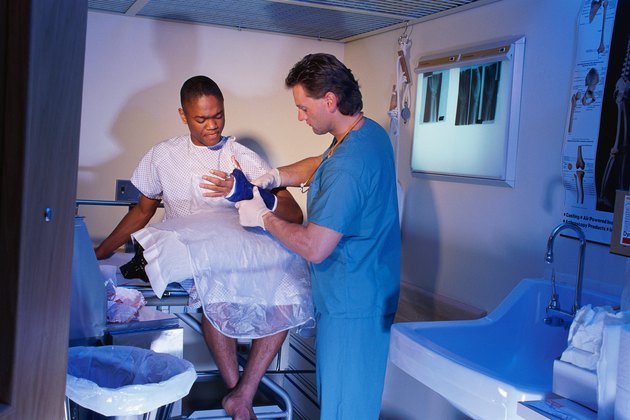Broken Wrist Complications After Cast Removal and Physical Therapy
Advertisements
The wrist is a complex joint consisting of eight bones, plus the radius and ulna, which are in the forearm. &A wrist fracture is any, some, or all of these bones. Complications after wrist fracture include persistent pain or stiffness, nerve or vascular injury, arthritis, infection, nonunion, ischemic necrosis, and carpal tunnel syndrome. The fracture of wrist joint can be treated with splint or plaster. Complications associated with treatment include the use of stents, splints or plaster. Surgery and devices for inserting metal plates or external fixators may also be necessary. If surgery or external fixator is used, infection may be a complication. Surgery, external fixators, splints, plaster and braces can cause damage to nerves or blood vessels. After the wrist heals, pain, numbness, or tingling may occur in the wrist area. In some cases, nerve damage may be permanent.
Advertisements
wrist stiffness
once the plaster or other fixings are removed, you can expect the wrist to be stiff. The function of the plaster is to keep the bone in place as it heals, but the plaster also stops movement, causing muscles, tendons and ligaments to become tense. Physical therapy is necessary to stretch and relax the wrist. Even with physical therapy, it may take months to recover the full function of the wrist. As with any injured joint, a fractured wrist may develop arthritis, sometimes years after the initial injury. Arthritis secondary to fractures is similar to most types of arthritis, with the most likely symptoms being stiffness and pain. Other complications after a wrist fracture include nonunion, in which the bones do not bond properly, and avascular necrosis, in which the bones die due to inadequate blood supply. Arthritis, nonunion and avascular necrosis are not usually associated with treatment.
carpal tunnel syndrome
the radial nerve passes through a tissue band called Carpal Tunnel on the medial side of the wrist under the thumb. In the process of wrist fracture healing, it will damage nerve or cause scar of carpal canal. The result is called Carpal tunnel syndrome. A study in the October 2008 issue of the Journal of hand surgery reported that if the radius and ulna move more than 35% when the wrist is broken, you are more likely to develop carpal tunnel syndrome. It will take time to recover. You should expect a full recovery of wrist fracture to take at least one year. American Academy of orthopaedics. You may continue to have some residual stiffness or pain for two years, especially in high impact injuries such as a motorcycle crash or if you are over 50 years old. If you have a serious injury - multiple fractures or fractures - recovery takes longer. Sometimes even after the best treatment, your wrist will become stiff and sore.
Advertisements




